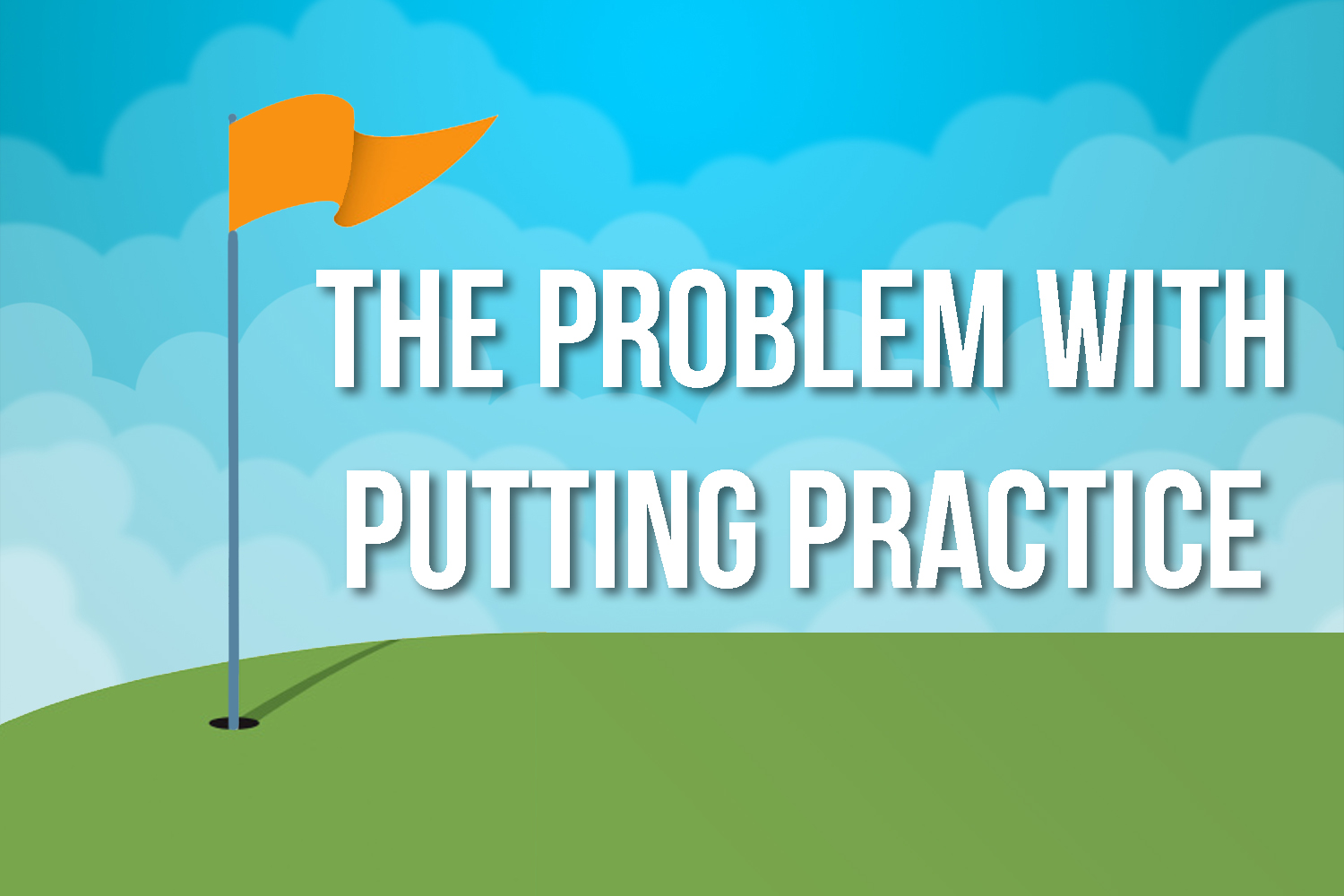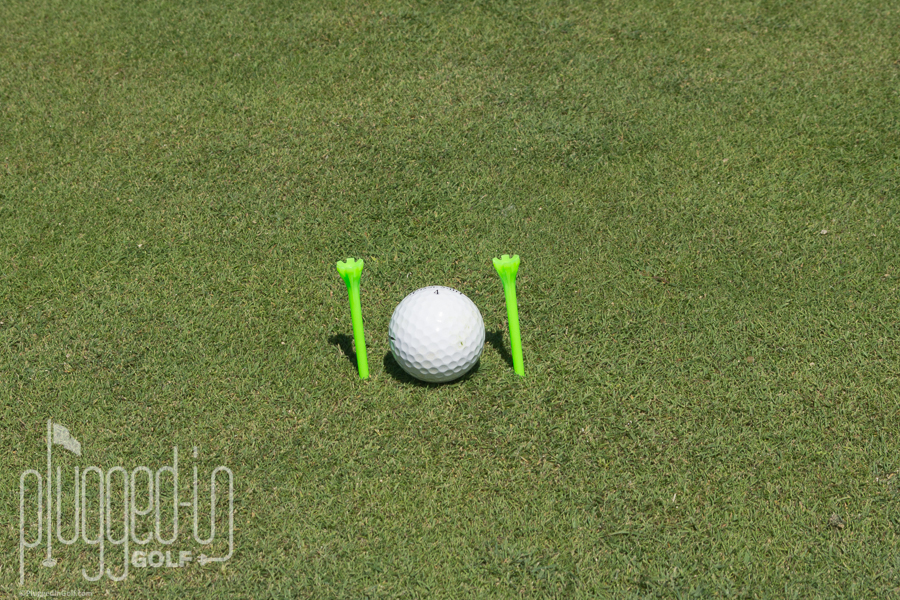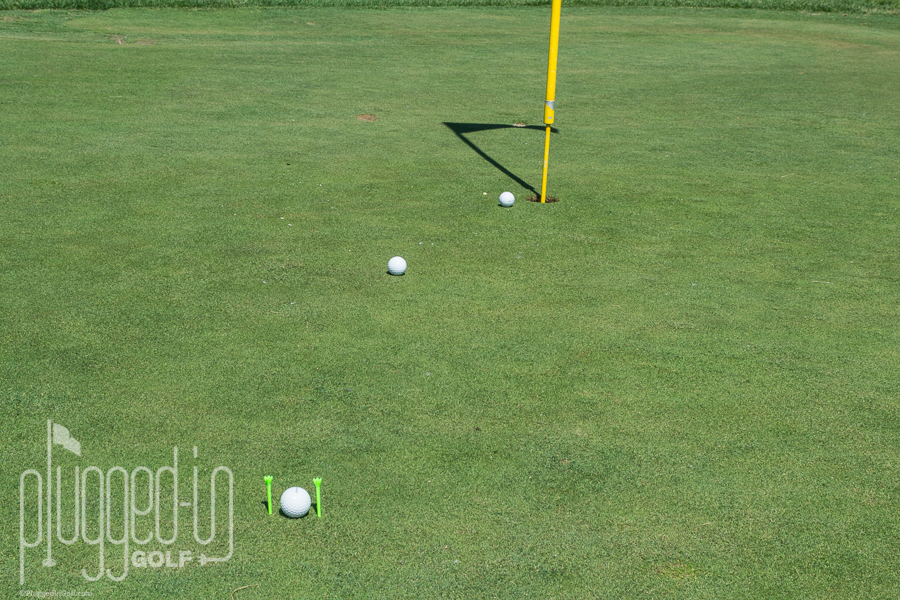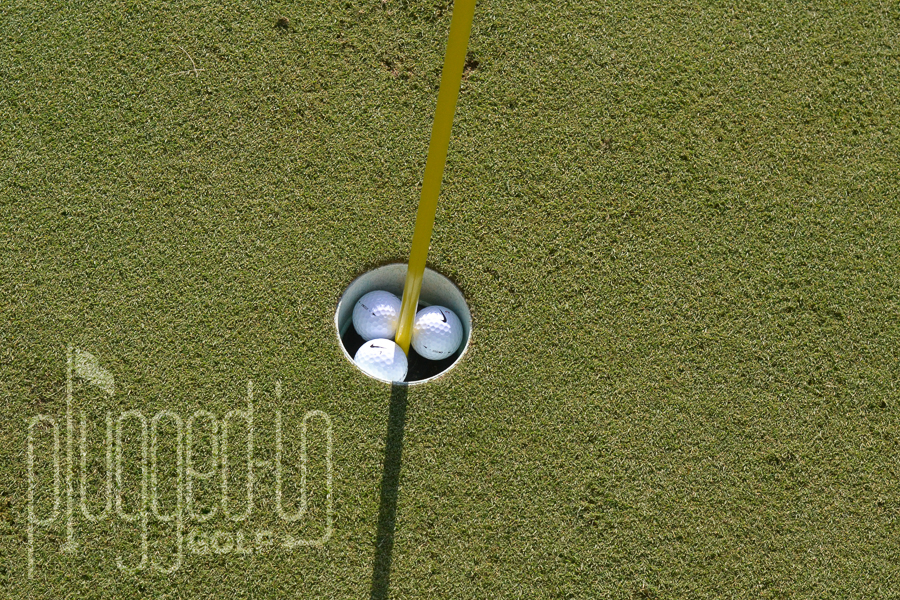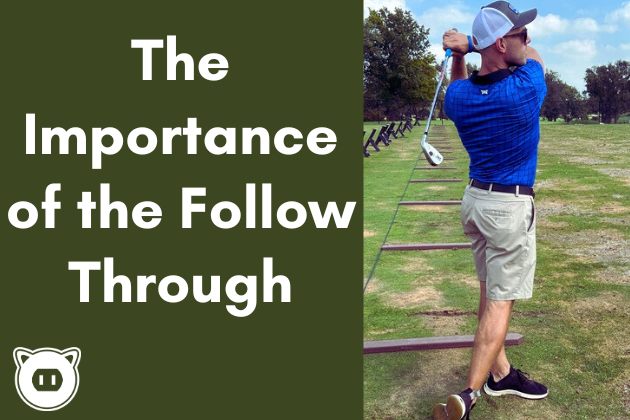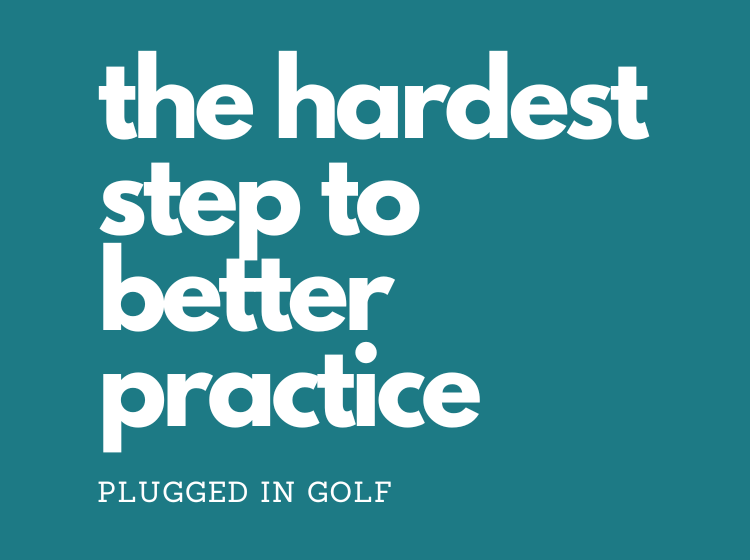You’re Doing It Wrong
As I’ve discussed before, most people practice putting by throwing down three balls and whacking them all at the hole from 10-20 feet. There are a lot of reasons why this is bad, but here’s the one I want to focus on today: it doesn’t help you diagnose your problems. If the ball goes in, you’re happy, but when you miss you don’t usually know why. Was it a bad read? Bad speed? Bad start line? You need to practice in a way that lets you work on each element independently.
This Lesson Is For You If:
You want to improve your putting
You want to get the most out of your time on the putting green
Three Key Factors
The three things required to be a great putter are speed control, correct reads, and starting the ball on your intended line. The problem is that it’s often difficult to know which pieces you’re good at and which pieces you struggle at. To diagnose your strengths and weaknesses, and improve them, you need drills that isolate each factor.
Speed Drill
Set up a box with tees, as you see above. The size of the box should be based on how good you are at distance control, but you can start with one that’s roughly 3 feet squared. Step back to anywhere from 10 to 50 feet or more and try to putt balls into the box. At first, it’s ok to hit multiple putts from the same distance, but, as you improve, you should make the drill more game-like by putting with just one ball and switching distances for each putt.
Line Drill
Most people think that working on making putts is the same thing as practicing hitting your line. It’s not. Most putts are not straight which means that you can make putts without hitting your line perfectly.
To really work on hitting your lines, you’ll need to set up a chalk line, ball gate (as above), or use a training aid like the Putting Fork. There’s nothing wrong with also seeing the ball go in the cup, but the key element is getting the ball through the tees or keeping it on the chalk line. While doing this drill, make sure to hit putts with different amounts of speed – it’s easy to control the face on a four footer, less so on a forty footer.
Read Drill
This is the most ignored component of putting, largely because it can be hard to work on. If you want to work exclusively on reads, you’ll need a ball rolling device like The Perfect Putter. This will allow you to see how different lines work with different speeds.
If you don’t have a ball roller, you can use a chalk line or ball gate to learn about reads. On a breaking putt, snap a chalk line on what you believe is the correct line. Hit some putts on that line and see if your read is correct.
One final drill for learning to read greens is to make the same putt in multiple ways. Find a putt with a good amount of break and make it on the straightest line with maximum speed, the highest line with minimal speed, and something in between.
Bonus Tip
Forget about what your stroke looks like. Would it be nice to have a beautiful, flowing, even putting stroke? Sure. Does having that “ideal” stroke mean that you’ll make more putts? Absolutely not. Stop wasting time trying to force your stroke onto a “perfect” arc or a straight-back-straight-through path. Work on the things that matter: controlling speed, controlling the putter face, and making great reads.
Conclusion
Before you head to the putting green for your next practice session, get a clear idea of what you need to work on and how you’re going to do it. By isolating the weakest part of your putting and improving it, you’re guaranteed to have more putts finding the bottom of the cup.
He founded Plugged In Golf in 2013 with the goal of helping all golfers play better and enjoy the game more.
Matt lives in the northwest suburbs of Chicago with his wife and two daughters.
- Performance Golf Click Stick Training Aid Review - October 18, 2024
- Callaway Opus Platinum Wedge Review - October 17, 2024
- When to Take a Break from Golf - October 15, 2024


